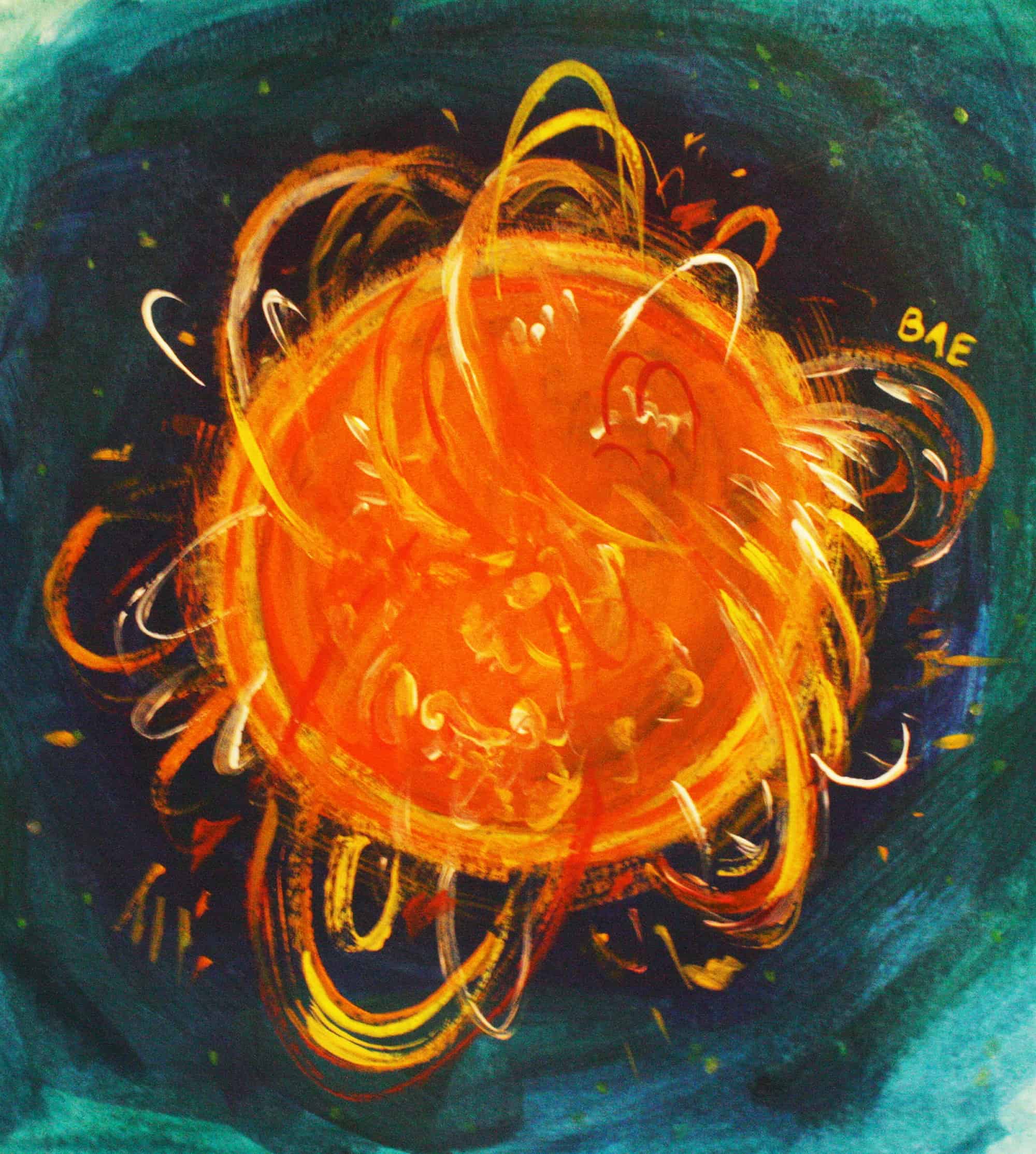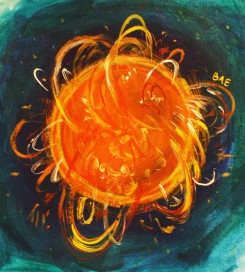It’s that time in the solar cycle again. According to physicists, solar activity increases and decreases according to an approximately 11-year cycle. During periods of high activity, sunspots amass and solar flares grow frequent.
A new low period began in 2008: scientists observed a record scarcity of sunspots, and solar irradiance was extremely low. In 2009, NASA predicted that the sun’s activity would reach its next maximum in May 2013.
Sunspots have recently begun to pepper the sun. On July 6, the sixth X-class solar flare of 2012 erupted from a sunspot. July 19 saw the emission of an M7.7-class solar flare. M- and X-class solar flares are the second-strongest and strongest classes of solar flares respectively; A-, B-, and C-class solar flares are weaker.
Hurling charged particles, x-rays, and other radiation towards Earth, solar flares have the potential to be destructive (though not, as the film 2012 suggested, apocalyptic). During past cycles, solar flares have induced additional currents in power lines, damaging transformers and causing blackouts — the 1859 solar storm destroyed transmission cables and caused telegraph systems to catch fire. According to the National Academy of Sciences, a comparable storm today would cause one to two trillion US dollars in damage. Moreover, although the Earth’s magnetic field diverts some of the sun’s emissions away from Earth, radiation can seep in at the poles, where the magnetic field is the weakest. Passengers travelling by plane across the North Pole risk being doused with radiation during a solar storm. The radiation can also affect astronauts and spacecraft.
Although satellites provide scientists with a way to monitor the sun for flares, satellites cannot determine when a solar flare will hit Earth. Fortunately, scientists from South Korea and the University of Delaware have been investigating a way to determine both the arrival time and intensity of imminent solar storms. The team, directed by Professor John Bieber of the University of Delaware, used neutron detectors located at the South Pole. High speed protons irradiated by solar flares strike atoms in Earth’s atmosphere, causing the atoms to split and release neutrons downwards. The sensors detect these neutrons.
Not all of the solar flare’s protons move at the same speed, though; a fast-moving proton has more energy and consequently does more damage than a slow-moving proton. Solar flares typically release larger numbers of slower particles, so the less energetic particles actually cause most of the damage. The scientists found that they could accurately estimate the damage an incoming solar flare would cause by attuning two sensors to neutrons of different energies and comparing the number of neutrons detected.
In examining data collected during solar storms between 1989 and 2005, the scientists found that protons moving at 53–76 per cent of the speed of light hit Earth approximately 95 minutes after a solar flare’s first protons hit Earth. After an extra 71 minutes, protons moving at 29–39 per cent of the speed of light arrived. By detecting a solar flare’s first protons, the sensors provide scientists with a 166-minute warning before the slower, most destructive wave of protons hits Earth. The almost three-hour warning would give astronauts enough time to take shelter and engineers enough time to temporarily turn off satellites in the flare’s path.
Although the South Pole detectors are far too large to be carried on a spacecraft, scientists are hopeful that Bieber and his colleagues’ research will pave the way for smaller, lighter sensors to be made. Lighter sensors would be valuable because spacecraft frequently travel outside Earth’s magnetic field, where there is no protection from the sun’s radiation. As a new maximum in the solar cycle approaches, Professor Bieber and his colleagues’ work seems more relevant than ever.
Sources: NASA, Huffington Post, Space.com, NewScience, ScienceNOW



